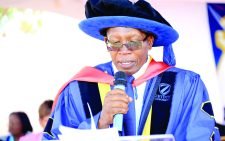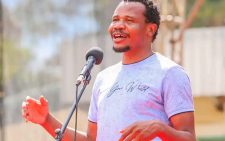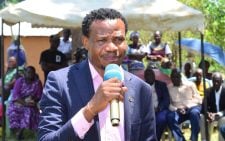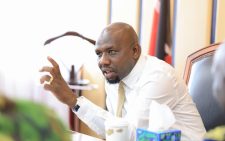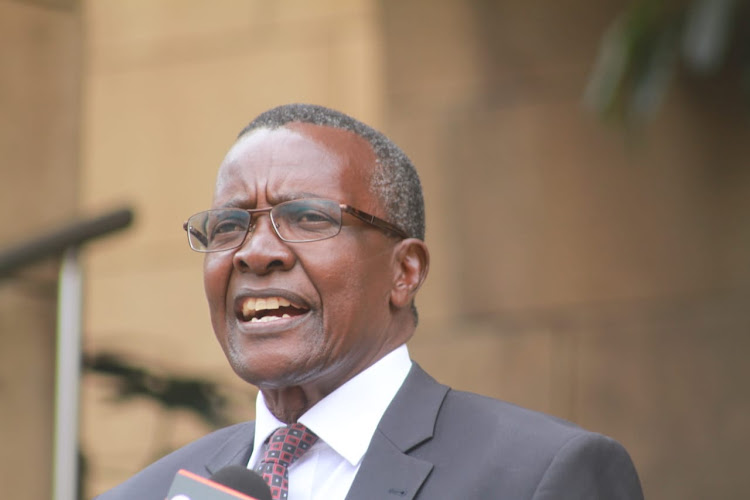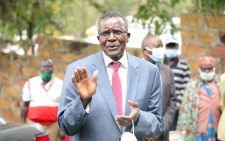Key talks focus on support for women living with HIV
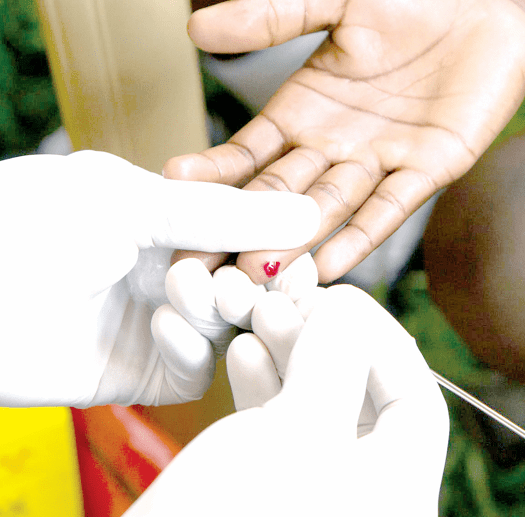
Infectious disease specialists are calling for a comprehensive package combining health-friendly infrastructure and gender equity to support women living with HIV right from childhood, all the way to old age.
The appeal was made at a close of a two-day conference largely focusing on women’s health, especially those living with HIV. The summit also narrowed down to adolescents, how HIV affects their life and affiliated challenges in accessing care.
Dr Fransesca Odhiambo, a consultant physician with expertise in HIV programme management and research leadership noted that there is an urgent need to make it comfortable for adolescents born with HIV to access care, even as they transition to adulthood, to mitigate the disease’s impact on their lives.
“We are looking at how we can mobilise collective support for adolescents to defeat these challenges that often arise from societal, cultural, health facility issues that come with accessing care,” Dr Odhiambo said, pointing out that the kind of support needed will also focus on women getting into menopause.
This is more critical, she added, because most of those programmes that were funded by the US, are now suffering resource constraints.
She spoke of instances where most adult clinics are not ready to receive 16-year-olds coming in, and the healthcare workers in those facilities don’t take their time to understand the adolescents’ HIV situation.
Safe environment
The medic talked of situations where the adolescents, who could be oblivious of their HIV status because the parents did not disclose to them, are judged immediately at the facility when they turn up, perhaps coming in without a caregiver.
“It’s very traumatic for the adolescent when they transition, and therefore we find it quite urgent that creating environments that are safe for this group that they can actually feel welcomed is important,” she said.
Most of these adolescents, Dr Odhiambo noted, were perinatally infected – that is, infected through passing of the virus during pregnancy – and may not even know their status until later in life.
After the age of 15, she pointed out that the adolescents are basically transitioning from the child clinics to adult health facilities and at a point in life when a human being is delicate.
“So that has remained a challenge actually in many setups and especially now with the dwindling funds, the transition has been fast tracked, therefore most of those structures haven’t been put in place,” she added.
Odhiambo said they are trying to review and see if they can change the tide using the resources that are available, to make care and treatment for adolescents more welcoming and easy for them to navigate.
Prof Elizabeth Bukusi, an infectious diseases specialist, said the challenges young girls and women face in the current space, both those who are at risk for HIV and those who are already infected, calls for support to access and stay on treatment.
She noted that it’s usually hard if the focus is only on women and not men because the male gender plays an important role.
“They’re partners in this because a woman who can’t disclose her status to her husband will have difficulty in staying on treatment,” Prof Bukusi said, pointing out that getting a man to walk alongside these advocacy programmes because their empowerment will enable them to enable the women to look after themselves.
Prof Bukusi pointed out that there are efforts to get men involved, have their voices count in that space of advocacy in order for them to be ready to support, and care.
“The men have the money, and on the other hand, some of the young ladies, jobless women want this money, and so these dynamics means that we continue to witness the transmission of HIV because poverty as a driving factor,” she said, emphasising why a man should be sensitised on taking a front seat in empowering women.
Support mechanisms
Marthaclaire Zamit, an epidemiologist and statistician at the Aga Khan University called on researchers to work towards debunking myths surrounding HIV and its long-term effects, guiding policymakers to develop sustainable initiatives that educate women at the community level.
“Instead of viewing HIV through a purely holistic lens, there is need to address the inequalities in accessing prevention, treatment, and care,” she told People Daily, and advised that understanding the role of men in seeking care and HIV’s impact on menopause and the non-communicable diseases (NCDs) associated with ART treatment, should be a priority.
She pointed out the impact of targeted health promotion, lifestyle education and comprehensive sexual education in driving meaningful progress in HIV care and prevention.
“But in all this, involvement of the male counterpart has proved to have effective outcomes,” she added.
Her sentiments were reinforced by Duke Laurent Mwai, a young man representing Adolescent and Youth Programme International (AYP), and an HIV prevention ambassador.
“We ensure that anytime a man comes to our outpatient department in our various facilities, we plan to craft a method or have a clinician basically there for them to make sure they get sensitisation of HIV and sexual reproductive health of the women they are with,” he said.
Mwai said that his organisation sensitises men and gives them effective responses and support mechanisms to their women.
The two-day conference focused on the entire lifespan of the woman, especially one that’s living with HIV and how such a person can live a healthy, productive life throughout their lifespan.
Infectious disease specialists are calling for a comprehensive package combining health-friendly infrastructure and gender equity to support women living with HIV right from childhood, all the way to old age.
The appeal was made at a close of a two-day conference largely focusing on women’s health, especially those living with HIV. The summit also narrowed down to adolescents, how HIV affects their life and affiliated challenges in accessing care.
Dr Fransesca Odhiambo, a consultant physician with expertise in HIV programme management and research leadership noted that there is an urgent need to make it comfortable for adolescents born with HIV to access care, even as they transition to adulthood, to mitigate the disease’s impact on their lives.
“We are looking at how we can mobilise collective support for adolescents to defeat these challenges that often arise from societal, cultural, health facility issues that come with accessing care,” Dr Odhiambo said, pointing out that the kind of support needed will also focus on women getting into menopause.
This is more critical, she added, because most of those programmes that were funded by the US, are now suffering resource constraints.
She spoke of instances where most adult clinics are not ready to receive 16-year-olds coming in, and the healthcare workers in those facilities don’t take their time to understand the adolescents’ HIV situation.
Safe environment
The medic talked of situations where the adolescents, who could be oblivious of their HIV status because the parents did not disclose to them, are judged immediately at the facility when they turn up, perhaps coming in without a caregiver.
“It’s very traumatic for the adolescent when they transition, and therefore we find it quite urgent that creating environments that are safe for this group that they can actually feel welcomed is important,” she said.
Most of these adolescents, Dr Odhiambo noted, were perinatally infected – that is, infected through passing of the virus during pregnancy – and may not even know their status until later in life.
After the age of 15, she pointed out that the adolescents are basically transitioning from the child clinics to adult health facilities and at a point in life when a human being is delicate.
“So that has remained a challenge actually in many setups and especially now with the dwindling funds, the transition has been fast tracked, therefore most of those structures haven’t been put in place,” she added.
Odhiambo said they are trying to review and see if they can change the tide using the resources that are available, to make care and treatment for adolescents more welcoming and easy for them to navigate.
Prof Elizabeth Bukusi, an infectious diseases specialist, said the challenges young girls and women face in the current space, both those who are at risk for HIV and those who are already infected, calls for support to access and stay on treatment.
She noted that it’s usually hard if the focus is only on women and not men because the male gender plays an important role.
“They’re partners in this because a woman who can’t disclose her status to her husband will have difficulty in staying on treatment,” Prof Bukusi said, pointing out that getting a man to walk alongside these advocacy programmes because their empowerment will enable them to enable the women to look after themselves.
Prof Bukusi pointed out that there are efforts to get men involved, have their voices count in that space of advocacy in order for them to be ready to support, and care.
“The men have the money, and on the other hand, some of the young ladies, jobless women want this money, and so these dynamics means that we continue to witness the transmission of HIV because poverty as a driving factor,” she said, emphasising why a man should be sensitised on taking a front seat in empowering women.
Support mechanisms
Marthaclaire Zamit, an epidemiologist and statistician at the Aga Khan University called on researchers to work towards debunking myths surrounding HIV and its long-term effects, guiding policymakers to develop sustainable initiatives that educate women at the community level.
“Instead of viewing HIV through a purely holistic lens, there is need to address the inequalities in accessing prevention, treatment, and care,” she told People Daily, and advised that understanding the role of men in seeking care and HIV’s impact on menopause and the non-communicable diseases (NCDs) associated with ART treatment, should be a priority.
She pointed out the impact of targeted health promotion, lifestyle education and comprehensive sexual education in driving meaningful progress in HIV care and prevention.
“But in all this, involvement of the male counterpart has proved to have effective outcomes,” she added.
Her sentiments were reinforced by Duke Laurent Mwai, a young man representing Adolescent and Youth Programme International (AYP), and an HIV prevention ambassador.
“We ensure that anytime a man comes to our outpatient department in our various facilities, we plan to craft a method or have a clinician basically there for them to make sure they get sensitisation of HIV and sexual reproductive health of the women they are with,” he said.
Mwai said that his organisation sensitises men and gives them effective responses and support mechanisms to their women.
The two-day conference focused on the entire lifespan of the woman, especially one that’s living with HIV and how such a person can live a healthy, productive life throughout their lifespan.

